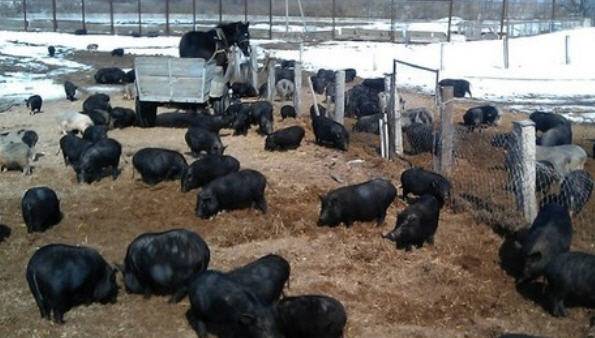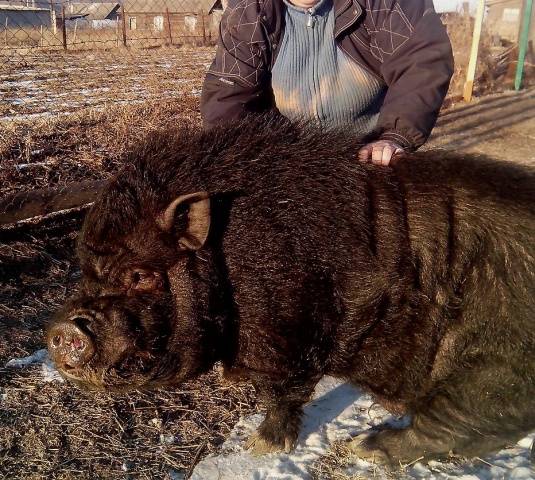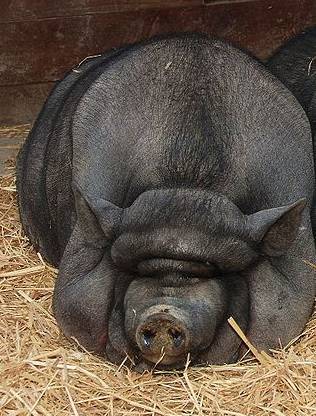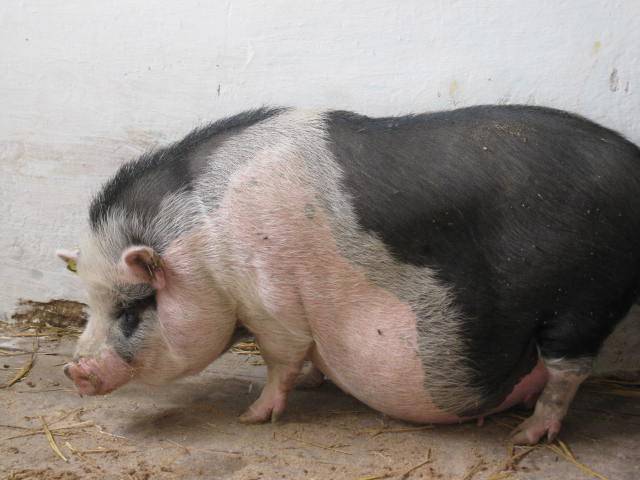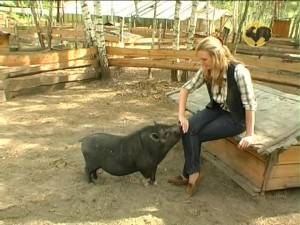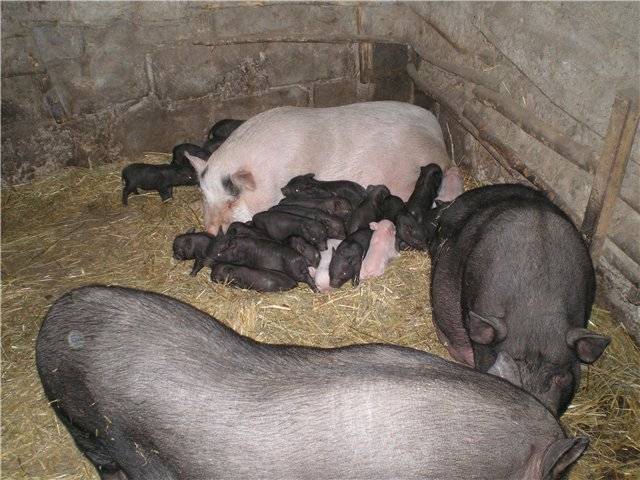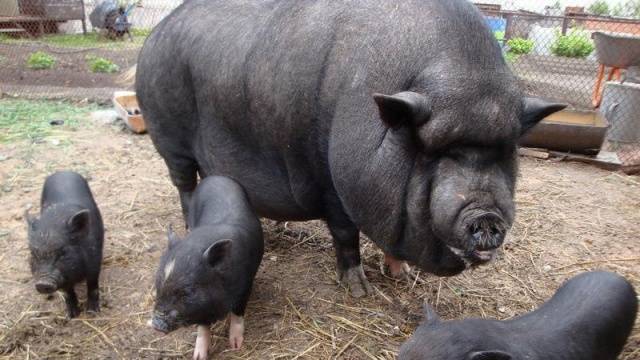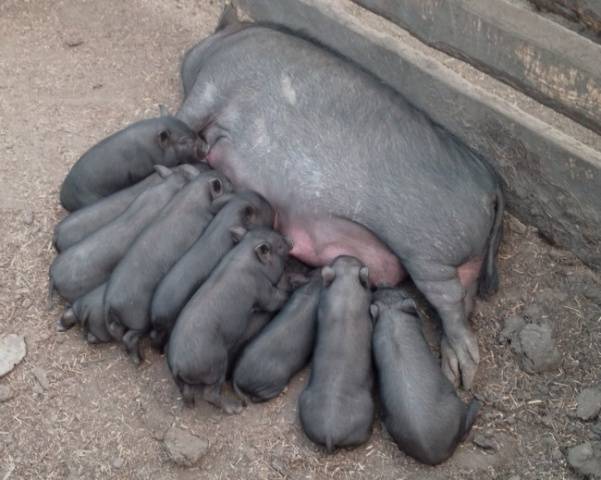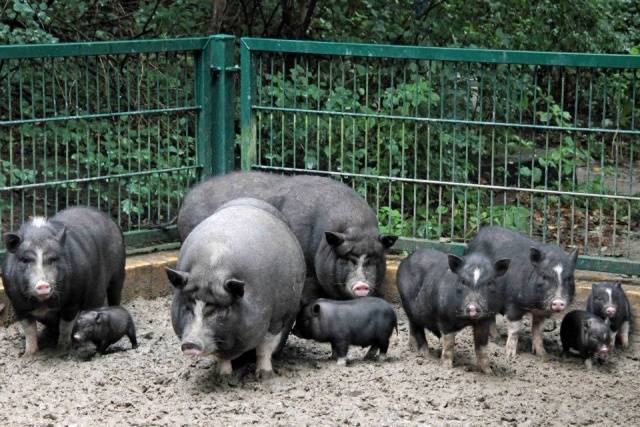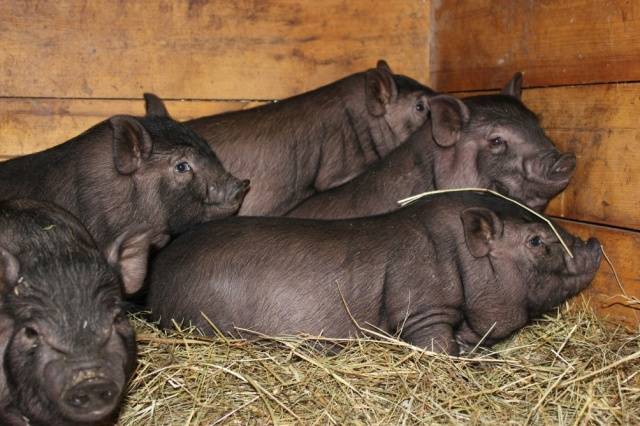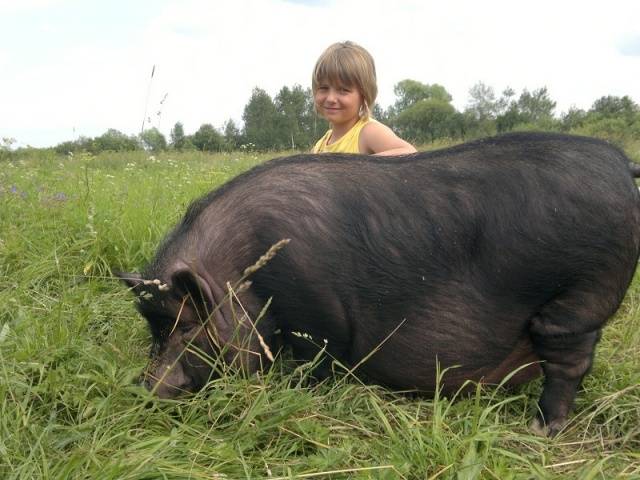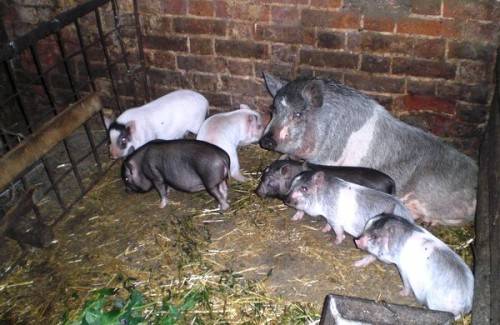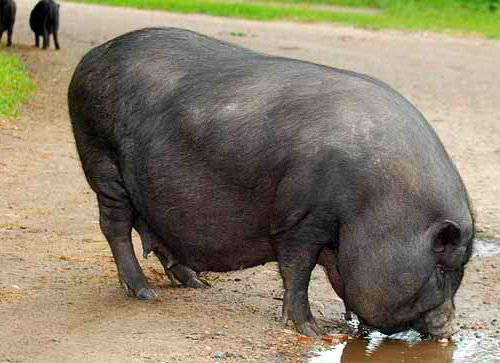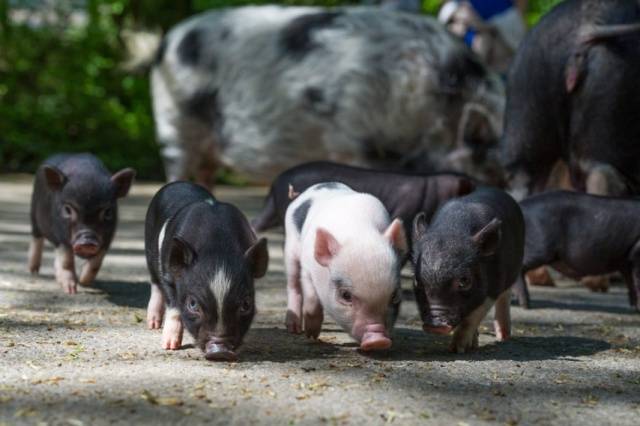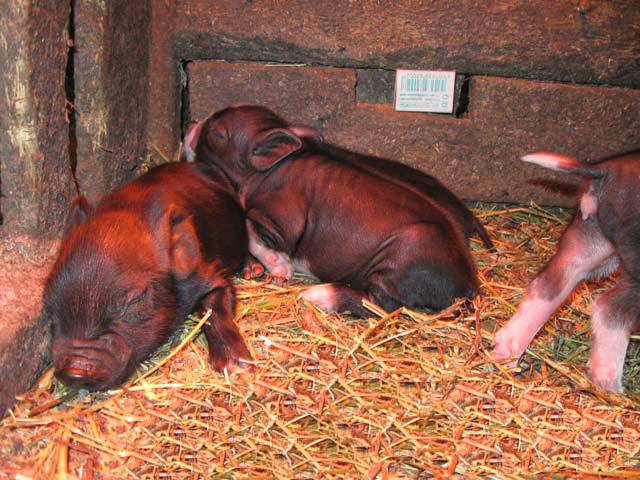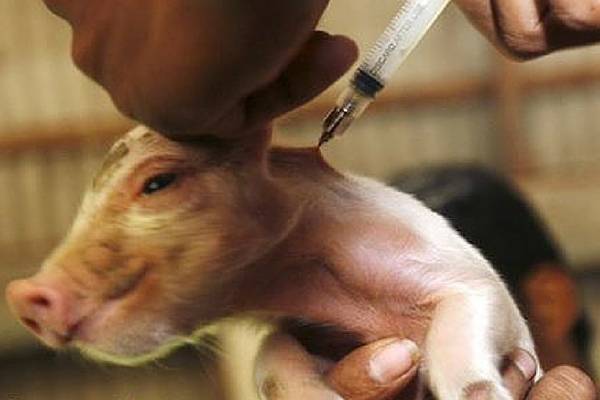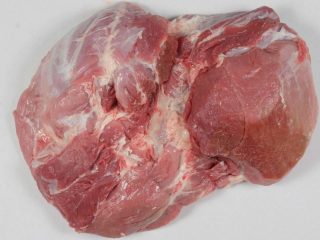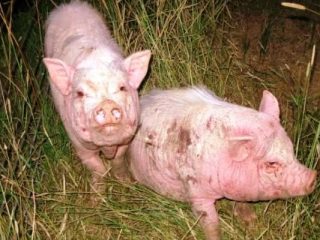Content
Pig breeding among private owners is much less popular than rabbit or poultry breeding. There are both objective and subjective reasons for this.
Objective ones are, alas, state control bodies with which it is difficult to argue. In many regions of Russia, private traders are already prohibited from keeping pigs under the pretext of ASF outbreaks. There is, however, an interesting trend: ASF constantly flares up where large pig breeding complexes are located. Moreover, the complexes themselves are bypassed by the disease.
In regions where there are no pig breeding complexes, the ASF situation is quite safe, veterinarians look favorably on the idea of the owner of a private backyard to have pigs. Especially if these are Vietnamese pigs, which are much less aggressive than large white pigs and much more unpretentious in keeping. Therefore, before you start pigs, you need to check with your veterinary station if there is ASF in the region.
Subjective is the widespread belief that pigs cause stink and dirt. And, in general, "the pig will find dirt." Pigs, by the way, have every right to be offended. Man does not allow them to live like a pig, forcing them to live like a human. In fact, pigs are very clean animals. Having the opportunity to choose, the pig will always only shit in one corner and will never lie in its own excrement.
The stench is also raised by a person, feeding the pigs food waste, keeping animals in pen by two meters and rarely cleaning.
The Vietnamese pot-bellied pig is distinguished by its cleanliness and accuracy even against the background of its fellows. Keeping Vietnamese pot-bellies in a scanty pen, not even letting them out for walks, is simply cruel to these pigs. Vestmouths are very trainable and can even tolerate until they are released from the shed. Then, on command, they run to the "toilet". So Vietnamese pot-bellied pigs are very pleasant animals to keep.
History and description of the Vietnamese pot-bellied breed
Potbelly pigs were originally introduced to Europe and Canada from Vietnam. This country is not the real homeland of the Vietnamese pig, just the name was given according to the country from where the vismouth breed began to spread around the world.
In the post-Soviet space, for the first time, the Vietnamese pig was positioned as a mini-pig, that is, a miniature version of a pig that can be kept in the house as a pet. Of course, Vietnamese pot-bellied pigs are at least twice as small as large whites and never reach a weight of 300 kg, but an animal about 65 cm tall, more than a meter long, weighing 150 kg and very strong muscles can hardly be called a pet.
At the same time, the buyer is assured that Vietnamese pot bellies do not grow large, the main thing is to limit them in food. For the sake of fairness, it must be said that sometimes you can really buy a purebred pot belly of miniature sizes.But this is just a failed specimen. Either the brood appeared in a cold room, and all the piglet's strength was spent not on growing, but on fighting the cold, or he was an artificial man from birth, or simply the result of inbreeding.
Mini-pigs have nothing to do with meat pigs, which are pot bellies. Miniature pigs are a separate group of pigs with which breeding work is carried out to reduce the size.
Exterior and productive characteristics of Vietnamese pot bellies
Vietnamese pot bellies pig breed belongs to the bacon type. Pigs of this breed are stocky, with a massive wide body and very short legs. They are called Vizlobryukhim quite deservedly. In many pigs of this breed, the stomach can scuffle on the ground.
The head of a real pot-bellied pig with a short snout. Moreover, fat folds creep from the forehead and cheeks onto the muzzle. In pigs, this is less pronounced than in boars.
The most common colors of Vietnamese pigs are black, white and piebald. Less common are wild boar-colored gray pigs and brown pigs.
The boar in the photo often looks like an infernal creature.
In reality, he is able to scare his unexpected appearance behind his back. The bellied pigs move silently.
This does not mean that Vietnamese pot bellies are dangerous. On the contrary, pigs of this breed have a calm, good-natured disposition and heightened curiosity with a constant desire to taste everything.
Most likely, the boar needed such protection to protect it from the canines of its congeners when fighting for the female. Boar canines begin to grow in the second year of life and will gain full size at five years of age if they are not removed.
While the boar is young, the canines do not matter much, but once they emerge from the mouth, the boar can become dangerous. Especially when she protects her pig with cubs.
The weight of adult bellies reaches 150 kg. It should be borne in mind that, despite the advertising, the lard of Vietnamese pot bellies is not at all tender and soft. By the age of four months, piglets have already formed a two-centimeter hard layer of fat on their backs. No meat layers. Actually, lard with layers of meat is obtained not from the breed of pigs, but according to a special growing technology, where the rest period alternates with periods of physical activity of pigs. During rest, fat is deposited; during activity, meat grows.
This does not apply to Vietnamese bellies. If Vietnamese piglets have the ability to move, they will fully realize this opportunity.
For this reason, under the layer of subcutaneous fat, the meat of the pot bellies has a delicate consistency and good taste. After cutting off the subcutaneous fat, the meat becomes lean. If you do not like fatty pork, it is enough to cut a layer of bacon from the carcass of a Vietnamese pot-bellied pig.
Keeping Vietnamese pigs at home is not difficult.
Conditions of keeping and feeding
Vietnamese pot bellies are very quiet animals. Squealing from them is not audible, even if the feeding time is overdue. Vizlobelly, in general, can only squeal in fright when they are caught. The rest of the time, the sounds that a Vietnamese pot-bellied pig makes are more often reminiscent of a dog's "booing", when the dog barks, almost without opening its mouth. They can grunt quietly with pleasure. This feature helps owners to avoid the attention of the relevant authorities if pigs are kept illegally.
True, pot-bellied piglets up to one month of age, dividing the mother's nipples, raise such a squeal that one gets the impression that they are being eaten alive and started from their hind legs. After a month, when the piglets begin to eat on their own, they stop squealing.But the Vietnamese pigs mother suckle up to two months, so it is too early to beat them off the mother in a month. It is often because of early weaning that Vietnamese pot bellies die.
House for Vietnamese pot-bellied pigs
Plus Vietnamese pot bellies in a small size and peaceful nature. Keeping several heads does not require a very large room. But if the owner does not want the pigs to be “pigs,” he should not keep them in the pen. Vietnamese bellies should be allowed to move freely and choose an angle for excrement.
15 m² is sufficient for keeping four adult bellies and six young heads up to 4 months old.
Ideal when there is an opportunity to arrange a walk for the pigs. Many owners keep Vietnamese pot bellies in the barn, letting them go for a walk in the yard during the day. Although the pot bellies walk calmly even in the snow, they are thermophilic enough to need an insulated barn with deep bedding on the floor. The bedding is best made from hay or straw. At night, a pot-bellied pig set up a rookery in the hay, burying no less than half. If they feel cool, they try to lie down together, hugging each other. And this is another reason why it is better not to divide Vietnamese pot-bellied pigs by pen.
Diet of Vietnamese pot-bellied pigs
Most often, buyers do not have a question about how to feed Vietnamese pigs. People logically believe that a pig is a pig. Eats the same as other breeds of this animal species. This is partly true. But only partly. It is not for nothing that the Vietnamese droopy are sometimes called herbivores.
In theory, like any pigs, Vietnamese pot bellies are omnivorous. They can even catch and eat a fledgling or a mouse. But it is better not to give them bloody meat, so that the sow, having tasted the blood, is not tempted to eat the piglets. Do not give kitchen leftovers either. Not pruning fruits and vegetables, but that creepy mixture that is often given to pigs, taking waste from canteens and restaurants. The pot bellies will not die on such a mixture, of course, but they will stink the same way as large white pigs, which, in order to save money, are often fed with waste from the canteen.
Still, the main diet of Vietnamese pot-bellied pigs is vegetable. Even grain granules should be given to them in very limited quantities, if you do not feed the piglet for lard as soon as possible.
There will be no harm, but the grain in this form is practically indigestible and passes through. In other words, it is a translation of the product.
But the same grain, but finely ground and compressed, so as not to dust into the granules of the compound feed, is absorbed so well that the bellies grow fat very quickly.
Since Vietnamese pot-bellied pigs are valued, they are still limited in the consumption of pellets for meat, and not for tough bacon.
The main diet of Vietnamese pot bellies is fruits (if you want to pamper the pig, give him kiwi skins), vegetables and grass. Thrifty owners expel pot-bellied pigs in the summer for the whole day to graze on the grass.
In winter, hay is given to the vismoths. They will not eat everyone, but they will nibble on something, and from the rest they will make nests for themselves. Also, juicy feeds are required in the winter diet: beets, carrots, apples, cabbage, etc. You can give potatoes raw or boiled. In damp, care must be taken so that it does not turn green. Pigs can be poisoned with solanine.
Chemically pumped store fruits can cause white diarrhea in the pot belly. The piglet may die, and if it survives, it will greatly lag behind in growth.
The "human" carrot sold in supermarket chains is another story.Competent owners of livestock, among which there are vislobrynitsy, simply refuse to buy these carrots, but the suppliers have an ironclad argument: “Do you take them to chain stores? Clean, wash. " They are very surprised when they find out that it is not to the store, but to animals, and they will not take it.
Raising Vietnamese pigs to provide meat for your own family requires less "production" space and much less nerves. You can buy 2-month-old piglets and provide them with the appropriate type of food, depending on the desire for tasty tender meat or rendered pork fat. You should not count on high-quality fat from vislobryukh, although now they are breeding to increase muscle mass and fat in vislobryukh pigs.
For meat, the emphasis is on plant foods, for fat - on concentrates.
Breeding
Breeding pot-bellied Vietnamese pigs is much more expensive. Last but not least, nerves. And additional knowledge is also needed on this issue.
Puberty vismorifiers
Vietnamese pot-bellied pigs mature by 4 months. Boar to 6. Theoretically. In practice, a boar can cover a pig even earlier. If the pig is large enough and weighs at least 30 kg, it can be breeding.
Pregnancy lasts 115 days ± 2 days. The first time a sow brings 6-7 piglets. Later piglets in a brood can be up to 16, but this is rare. Usually 10-12.
Signs of hunting and mating
Given that the owners do not sit next to the pigs waiting for the heat to appear, the main and easily noticeable signs will be swelling of the loop and immobility of the pig if you put your hand on the sacrum.
However, one should not flatter oneself especially about immobility. If the pig is wild, it will still be very mobile. So you need to look closely at the loop. If there are signs of hunting, the pig is allowed near the boar. Then the pigs will figure it out for themselves.
Otherwise, then conversations begin about the genetic predisposition of a pig to give dwarf piglets during early gestation. In fact, cold, hunger and inbreeding are factors that affect piglet size.
With inbreeding, in addition to size, the structure of the piglets may also suffer. For example, an outwardly normal pig may suddenly start pulling all four legs under him at once and try to move in this state. Upon closer examination, it turns out that his toes have not developed correctly and the pig does not walk on hooves, but on soft tissues, from which all the skin has already peeled off. That is, in fact, such a pig moves on open wounds. Pain as a stressor can also slow down the development of the piglet.
Farrow
About a week before farrowing, the udder begins to fill in the pig. However, this is an inaccurate indication, since the udder is mainly fat and the pig may have simply gained additional fat. The belly often sinks, too, long before farrowing. But dragging the bedding for the nest and increasing the loop indicate that farrowing will occur in the next day.
On a note! You should not be afraid of the obesity of the sow. All its fat is lost during the process of feeding the brood of piglets.
Up to the point that in place of the fat collar, which forms folds above the ears, gaps appear. The Vietnamese pig comes back to the hunt two months after farrowing, just having time to lose weight. So Vietnamese pigs do not suffer from infertility.
The photo shows a fat pot-bellied pig that will lose weight after farrowing and feeding piglets.
Trouble-free farrowing of Vietnamese pigs - myth or reality?
The answer to this question is yes and no. It all depends on the breeding tactics carried out by the Vietnamese pot bellies breeder from whom the pig was bought and the further actions of the new owner.
A problem-free farrowing occurs when a pig that has not been able to farrow on its own, has eaten the piglets, has refused to feed the brood, and slept on the piglets, immediately ends up in the freezer. Even if she was piging for the first time. With such a tough selection, the owner of a Vietnamese pig can sleep peacefully at night, and in the morning come to the barn and rejoice at the small, nimble piglets.
Therefore, a Vietnamese pig, peaceful in other conditions, after farrowing, can begin to rush to the owner, protecting his brood of piglets.
Farrowing with problems is most common in the vastness of the former Soviet Union. There are several reasons for this:
- import of initially low-quality livestock of Vietnamese mouth-bellies;
- the high cost of Vietnamese piglets in comparison with salaries (in some European countries, a Vietnamese piglet costs 20 euros in 3-4 months);
- the desire to nurse all the livestock born due to the high cost of Vietnamese piglets, even if the pig itself is not eager to feed its offspring or one of the piglets suffocated during farrowing (artificial respiration);
- not the culling of grown problem piglets for meat together with the sow, but the further breeding of these individuals.
As a result, trouble-free farrowing becomes a myth and the owner spends nights in the pigsty to help the pot-bellied Vietnamese pig farrow. But such pigs are usually not aggressive. Although it happens very badly: aggressiveness combined with problems.
Traditionally, a Vietnamese pig is equipped with a separate pen with a piglet shelter for farrowing. Just in case the queen decides to eat the brood. Heaters are also placed there in cold weather.
For this reason, this lamp is good for a brooder for chicks that will not get out into the cold when overheated. A piglet, heating under an infrared lamp and going into a cold room to suck its mother, can get a cold. It is better to put heating appliances in the pigsty. If the air temperature in the room is above + 20 ° C, this is enough for the piglets to feel comfortable.
Who to leave for the tribe
If you want to leave one of the pigs for the tribe, you should, if possible, take into account the above nuances. Piglets are left for divorce from a trouble-free pot-bellied pig, if there is one on the farm. The piglet must be large. Even if you are sure that the pig is small due to external factors, it is better to leave the large one. Piglets grew up in the same conditions, the care for them was the same, which means that the one that is larger, at least has better health. Also, do not leave inbred piglets in self-repair if you do not have serious zootechnical knowledge and a clear understanding of the goal in which inbreeding is necessary.
The photo clearly shows the sharp-faced pigs, listed as Vietnamese pot bellies. These are either unclean individuals, or the result of inbreeding. In any case, leaving such a pig to the tribe is not worth it.
Growing piglets
Practically everywhere there are recommendations to pierce piglets with iron injections, on the 4th, 10th and 15th days of life, since there is little iron in pigs' milk. Without injections, piglets become lethargic and die. But the decision to inject iron or not depends largely on the feed that the pig eats and the water that it drinks. If the foods consumed by Vietnamese pot bellies are high in iron, injections may not be necessary. Local veterinarians should be consulted on this matter. An excess of iron is no less harmful than a lack of it. Piglets also die from an iron overdose.
How to prune piglets' fangs and pierce iron preparation:
The very case when the piglets' teeth are cut off because a poor-quality pot-bellied pig refuses to feed them. But, perhaps, the pigs really bite the pig's udder strongly, because selection is not carried out. If all pig breeders polls slaughter pigs that have abandoned piglets, then biting piglets also stop being born. Only those who can suckle without injuring the mother survive.
After all, the presence of teeth in newborn piglets is due to the laws of evolution. In theory, if the pig dies, the piglets have a chance to survive under the protection of the boar by feeding on pasture. And somehow, after all, wild boars survived for millions of years until they were domesticated.
Video explaining why piglets die after iron injection:
Reviews of the owners of pot-bellied pigs
Conclusion
Vietnamese pot bellies are truly a profitable investment. Business on them, with all the prohibitions and restrictions, is unlikely to be done, but the family will stop going to the store for pork. And the purchased pork will not go down the throat after the meat of the pot bellies.
